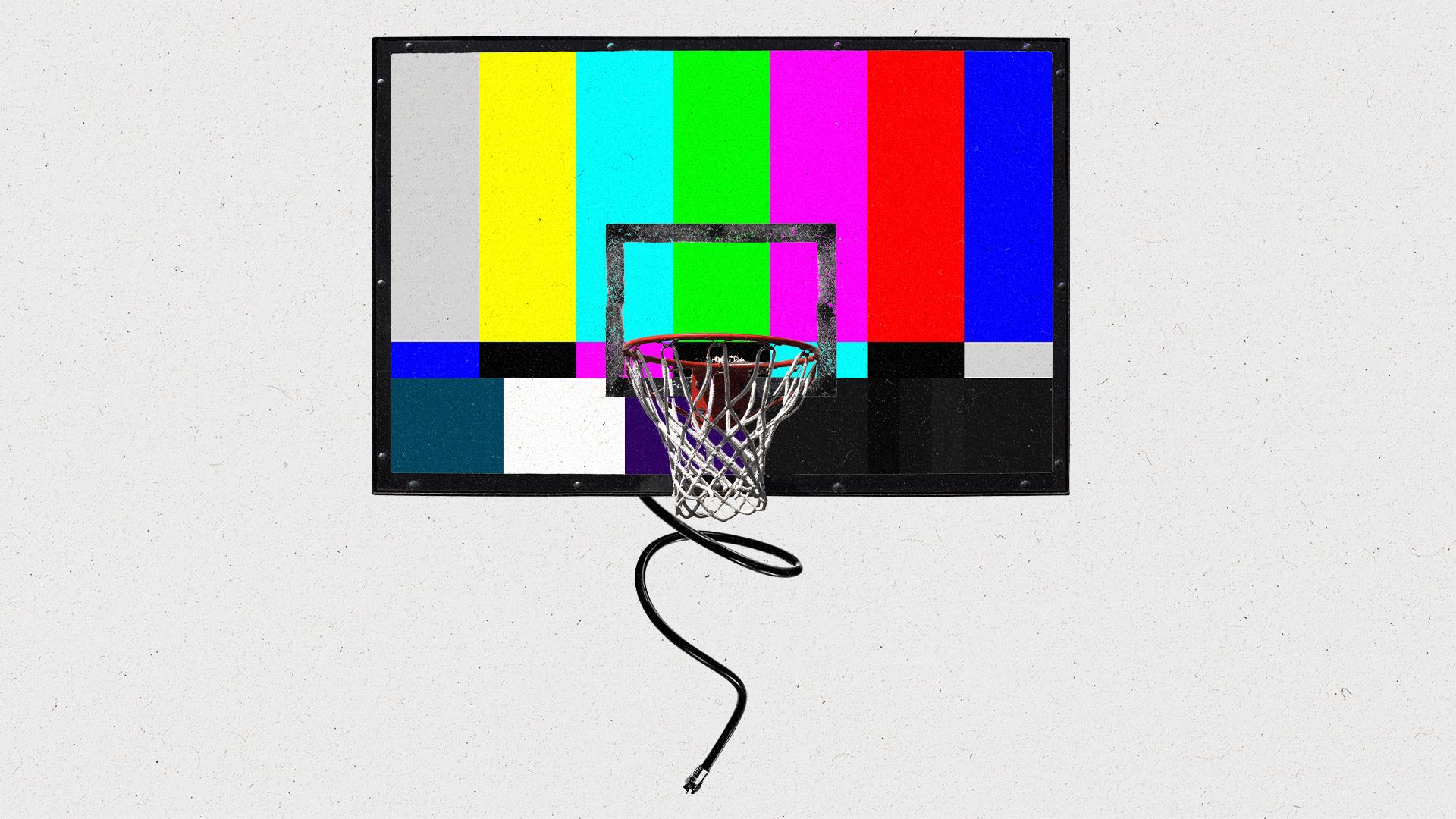The NCAA basketball tournament will be one of the biggest CTV events of the year
The annual sporting event is ideal for CTV viewing and a showcase for the changing nature of TV viewership.

March Madness, the annual men’s college basketball tournament, begins this week, and in addition to being an electrifying weekend of basketball, the event promises to be an enormous boon for connected TV and a huge opportunity for advertisers.
For years, live sports were thought to be immune to the effects of cord-cutting. Few live sports events were available via streaming, and the ones that were often suffered from lag issues.
But that has changed significantly in recent years. Live sports are fueling consumers’ embrace of CTV, and that development will be on full display in the first two rounds of the NCAA tournament this weekend, a stretch that many consider to be the most thrilling few days in all of sports.
Among people planning to watch the tournament this year, 42 percent of them plan to do so via streaming, a 17 percent increase from last year, according to a survey conducted last week of more than 1,000 U.S. consumers by market research firm YouGov and The Trade Desk. If that holds true, this year’s tournament would break last year’s record as the most streamed March Madness in the history of the event.
The large number of CTV viewers makes sense given the nature of the competition. The first few days of the tournament fall during traditional work hours, and also feature multiple games happening simultaneously, and it can be difficult for fans to find the TV channel airing their alma mater’s game. Some games might not even be available in their pay TV package.
With CTV, however, basketball fans can more easily find the games they’re looking for. And with the ability to more seamlessly switch between close games, CTV is ideal for March Madness viewing.
The tournament is also expected to attract its largest audience in several years. The 2020 event was canceled due to Covid, and last year’s tourney was a subdued affair, with games played in empty arenas and no crowd noise. But more than a third (37 percent, to be exact) of U.S. consumers plan to watch March Madness this year, a 28 percent year-over-year increase, according to the YouGov study.
Many of the March Madness CTV viewers will be young consumers, the most coveted demographic for marketers. "March Madness gives advertisers a unique opportunity to reach younger audiences who prefer streaming for sports viewing," says Ashutosh Gangwar, general manager of TV partnerships at The Trade Desk.
Indeed, the highest rates of live sports streaming are among TV viewers ages 18 to 34, with more than a third (35 percent) of consumers in that age bracket streaming more than 6 hours of live sports per week, according to a separate custom YouGov survey conducted in December 2021.
More generally, live sports are a major contributor to the transition from linear pay TV to streaming. The number of sports fans who watch live sports via a paid streaming service, such as ESPN+, NBA TV, or Paramount+, nearly doubled in 2021 from the year prior, to 27 percent from 15 percent, according to research firm eMarketer.
Streaming advertisers are well aware of the importance of live sports for the CTV industry, as evidenced by the flurry of live sports programming deals that have been struck in recent months:
- Just last week, Apple signed a deal to live broadcast Major League Baseball games on Apple TV+.
- Peacock will be streaming some MLB games, as well.
- HBO Max signed a deal this month to stream U.S. Soccer Federation games, one year after striking a live broadcast deal with the National Hockey League.
- And Disney and Amazon are reportedly in a bidding war to stream cricket games from the India Premier League, a deal that will reportedly be worth an eye-popping $5 billion, a number that underscores the global opportunity presented by streaming live sports.
- The 2022 Winter Olympics had the lowest ratings of any Olympics, but NBC’s Peacock streaming service, which aired all Winter Olympic events, saw some of its highest usage since the service was unveiled.
Only about a third of U.S. households have cut the cable cord, far less than traditional pay TV (Spectrum, Dish, DirecTV, etc.), which can still be found in more than half of U.S. homes.
But if current trends continue, there will be a day in the not-so-distant future when CTV surpasses pay TV as the most popular channel in all of media. Pay TV is on a steady decline — its household penetration is expected to decrease by two to three points a year over the next four years — while cord-cutting is expected to continue its slow, steady rise. By 2025, cord-cutters will constitute 38.3 percent of the U.S. population while 44.6 percent of homes will still have pay TV, according to forecasts. After a couple more years, CTV's household penetration might be greater than pay TV’s.
Subscribe to The Current
Each week, The Current gives you a rundown of the biggest stories and latest trends from the world of data-driven marketing, including topics like Connected TV and the future of identity — all delivered directly to your inbox.